Curiosities and Challenges about Brasileirão
Do you like Brasileirão?
Would you like to see more curiosities like these..
Despite being often called “América Mineiro” so as not to be confused with the other “Américas” of Brazilian football,....
America's name and colors were chosen by lot. On April 30, 1912, the girl Alda Meira, sister of one of the founders,..
On March 25, 1908, a group of 22 students gathered at the bandstand in the Municipal Park of Belo Horizonte to found....
So.. How about a Challenge on the Best Quiz Platform in the World?
Dodging life's difficulties, score a new goal every day.
Get to know a little about everything and bet on your knowledge in incredible challenges and duels..
Join the betspot.zone community, accumulate bts (bets) and even compete for prizes..
Discover some interesting facts about Brasileirão..
flamengo Quiz - flamengo Curiosities - flamengo Challenge - cruise Quiz - cruise Curiosities - cruise Challenge - vasco Quiz - vasco Curiosities - vasco Challenge - palm trees Quiz - palm trees Curiosities - palm trees Challenge - sports Quiz - sports Curiosities - sports Challenge - football Quiz - football Curiosities - football Challenge - championship Quiz - championship Curiosities - championship Challenge - gremio Quiz - gremio Curiosities - gremio Challenge - - Frequently asked questions about Brasileirão
Despite being often called “América Mineiro” so as not to be

Despite being often called “América Mineiro” so as not to be confused with the other “Américas” of Brazilian football, the club, unlike rival Atlético, does not carry “Mineiro” in its official name: its baptism is just América Futebol Clube. . América was the first team to be founded by a black man: Geraldino de Carvalho was among the young men who founded the club on April 30, 1912.
publicity
America's name and colors were chosen by lot

America's name and colors were chosen by lot. On April 30, 1912, the girl Alda Meira, sister of one of the founders, took the little paper with the name América Foot-Ball Club, which later had the spelling changed. The same process was used to define green and white as the team colors. The year after the foundation, the black of the shorts also became part of the team's official colors.
On March 25, 1908

On March 25, 1908, a group of 22 students gathered at the bandstand in the Municipal Park of Belo Horizonte to found the Athlético Mineiro Football Club, which five years later became Clube Atlético Mineiro (CAM).
If throughout its centenary history Atlético revealed great

If throughout its centenary history Atlético revealed great players to Brazil, its first revelation, back in 1909, was in the field of literature: the first Galo goal in history was scored by Aníbal Machado, who would later become a poet and writer. , famous mainly for the work “Journey to the breasts of Duília”.
publicity
The Hurricane emerged from the merger of the Internacional F

The Hurricane emerged from the merger of the Internacional Foot-Ball Club, founded by Joaquim Américo Guimarães, after whom Arena da Baixada is named, and the América Foot-Ball Club, founded by a group of members of Internacional. The first official match for the Red-Black team was played with Internacional's shirt because the new team's uniform had not been ready. The game took place on April 6, 1924 and Athletico beat Universal FC 4-2.
Athlético earned the nickname Hurricane in the 1949 State Ch

Athlético earned the nickname Hurricane in the 1949 State Championship. There were 10 wins in 12 games, including a 3 x 1 and a 5 x 2 in Atletibas (disputes against rival Coritiba). The team scored a total of 49 goals in the league and won the title with two games to spare.
When Clube Bahiano de Tênis and Associação Atlética da Bahia
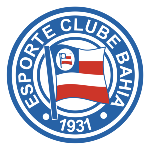
When Clube Bahiano de Tênis and Associação Atlética da Bahia decided to close their football teams, some “orphan” players from the team decided to join together to create Esporte Clube Bahia. The first meeting was at a cabaret in Salvador. The team was founded on January 1, 1931.
publicity
Esporte Clube Bahia

Esporte Clube Bahia is also known as Tricolor de Aço or Esquadrão de Aço, so no one better than the Man of Steel to be the club's mascot. The Superman drawing that represents the club was created by cartoonist Ziraldo, in 1979. To help in the fight against racism, the classic mascot gained, in 2014, a companion: Lindona da Bahêa, a version of the artist Nei Costa for the Wonder Woman.
Botafogo

Botafogo is the oldest team in Rio de Janeiro: it was founded on 7/1/1894 as a racing club. In 1904, from this club was born a football team called Electro Club. The name was short-lived: months later it was decided to use the name of the neighborhood for the football team, then called Botafogo Football Club. Only in 1942 did Botafogo de Futebol e Regatas appear, a merger between the regatta club and the football team.
The number 7

The number 7 is very present in the history of Botafogo: it was the number of Garrincha, the greatest player in the history of the club; it was Maurício's number, scorer of the 1989 title goal for Carioca, which broke a 21-year drought without a title; it was also the number of Túlio Maravilha, idol and top scorer in Botafogo's greatest achievement of all time, the 1995 Brasileirão. And more: in this title, Botafogo's sponsor was the soft drink brand… 7up.
publicity
Corinthians was named after Corinthian FC
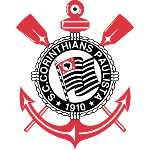
Corinthians was named after Corinthian FC, an English team that had toured Brazil. The name did not please everyone. There were those who preferred that the name of the club honor a renowned Brazilian such as Santos Dumont or Carlos Gomes. Corinthians was founded by a group of humble workers. The first president, for example, was a tailor. The players themselves helped build the field where the team would play its friendlies.
The club's mascot, the Musketeer

The club's mascot, the Musketeer, emerged from a chronicle in the newspaper A Gazeta Esportiva after a friendly match against Barracas, from Argentina. The text compared the grit of Corinthians players with The Three Musketeers by Alexandre Dumas. Corinthians lived for four years without having a shield. The first one was only designed in 1914. The first Corinthians uniforms were cream colored. The shade, however, faded easily after washing, and as there was no money to replace the fabric, it was decided to adopt white as the official color.
On January 30, 1910

On January 30, 1910, a group got together to found the Coritiba Foot-Ball Club. At the time of drawing up the minutes, however, the member João Viana Seiler suggested considering the date of October 12, 1909 as the foundation of the club. On that occasion, they received an invitation from a group from Ponta Grossa, in the interior of the State, to hold the first football game in Paraná – scheduled for the 23rd of October. In a new meeting, on April 21, 1910, it was decided to change the name from Coritibano to Coritiba.
publicity
The first Paranaense Championship

The first Paranaense Championship was played only in 1915 and the following year, in the 1916 Paranaense, Coritiba lifted its first trophy, by beating Britânia, in a final disputed in January 1917. The competition was still a doubt in relation to his credibility and any football game was a cause for joy and celebration. In the years 1917, 1920 and 1921, Coxa won the Torneio Inicial, a competition that had games with reduced time and a field with smaller dimensions.
Cruzeiro

Cruzeiro was born during a visit by the Italian consul to Belo Horizonte, at the turn of the 1920s. Members of the Italian colony in the city met with the official in the middle of Christmas to request the organization of the association. It was decided to arrange a new meeting for the following week, after the end of the year festivities. In this second conversation, held on January 2, 1921, the Società Sportiva Palestra Italia was formed.
The club was founded in 1921 under the name Palestra Itália

The club was founded in 1921 under the name Palestra Itália, but had to change its name in 1942 due to the imposition of the New State of Getúlio Vargas, which prevented any Brazilian association from exalting Germany, Italy or Japan, Brazil's opponents in World War II. The new name made reference to Cruzeiro do Sul, the constellation represented in the flag of Brazil. Until 1925, Cruzeiro only accepted players of Italian descent into its squad.
publicity
Back in the time of Palestra Itália

Back in the time of Palestra Itália, Raposa scored the greatest defeat in the history of the Campeonato Mineiro: 14 x 0 against Alves Nogueira in the 1928 State Championship. same game. The 1928 Palestra Italia was really hellish: there were 99 goals in 15 games, which represents an average of 6.6 goals per game. Between 1929 and 1930, Palestra achieved another incredible feat: it was twice state champion with 100% success in both titles.
Founded on December 12, 2001
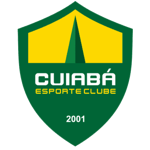
Founded on December 12, 2001, Cuiabá Esporte Clube was created by former player Luís Carlos Toffoli, known as Gaucho. Auriverde da Baixada was created to compete in the base categories, as its founder wanted students from the Gaúcho Football School, which was created after he stopped playing, to participate in the championships. 2 years later, however, the professional team was also playing in the Mato-Grossense Championship.
Cuiabá's professional team has 10 Mato Grosso Championships

Cuiabá's professional team has 10 Mato Grosso Championships, 2 Green Cups (2015 and 2019) and the 2010 Governador Cup. Grossenses Sub-20, in 2003, 2004 and 2018, and Sub-17, in 2009 and 2010. In 2021, Cuiabá disputes, for the first time, the A series of the Brazilian Championship. Before, Auriverde da Baixada had stayed 2 years in the B series (2019 and 2020) and another 7 in the C series (from 2012 to 2018), after moving up from the D series, in 2011.
publicity
Flamengo was founded on November 17, 1895

Flamengo was founded on November 17, 1895, but the official date of foundation was changed to November 15, the national holiday of the Proclamation of the Republic. Six young residents of the neighborhood wanted to compete in rowing with other boys from Rio de Janeiro and therefore decided to create the Grupo de Regatas do Flamengo, renamed Clube de Regatas do Flamengo, on October 28, 1902.
In 1911, some members of Fluminense

In 1911, some members of Fluminense, led by the medical student Alberto Borgerth, left the club to create the football department at Flamengo, then dedicated only to rowing. At first, the rowers were against it. But the new board, which took office on November 8, 1911, agreed to study the proposal. On Christmas night, Flamengo created its Land Sports Department.
Fluminense Football Club was founded on July 21, 2021
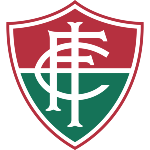
Fluminense Football Club was founded on July 21, 2021. The first idea was to name Flu as Rio Football Club, but the chosen name ended up being Fluminense. ”Flumen” means “river” in Latin. The first game for the new team was played on October 19, 1902, three months after the club was born. It was the first rout in the history of Fluminense. Score: 8 to 0 for the tricolor. Fluminense has a marked difference in relation to the three rivals of Rio de Janeiro: it was the only one of the big four to be born focused on the practice of football. Therefore, it does not have “Regatas” in its official name.
publicity
The first Brazilian goal in a World Cup

The first Brazilian goal in a World Cup was scored by a legendary Fluminense player: João Coelho Netto, Preguinho, in Uruguay, in 1930. At 17 minutes of the second half of Brazil's debut against Yugoslavia, when the selection lost 2-0, he scored the goal that reduced the difference, but did not prevent the defeat. In addition to football, Preguinho also made his name on the club's athletics, basketball, football, hockey, swimming, diving, volleyball and water polo teams.
Stella was founded on 5/30/1915

Stella was founded on 5/30/1915, and its name in Italian means “star” – that is why the shield was a red star. When Stella was dissolved and the same board founded Fortaleza, on 10/18/1918, the team was born as Fortaleza Sporting Club – the same composition of names of rival Ceará Sporting Club, which on its 1st anniversary, in 1915, abandoned the name Rio Branco Football Club. In the 1940s, the tricolors adopted the spelling in Portuguese, becoming Fortaleza Esporte Clube.
Fortaleza acquired land in the Pici neighborhood in 1957

Fortaleza acquired land in the Pici neighborhood in 1957, inaugurating its stadium, Alcides Santos, in 1962. The neighborhood hosted a North American military base during World War II, having the name of Post Command (Command Post, hence the corruption Pici). Later, the neighborhood was dismembered, and the team's headquarters was located in the current Jockey Club. Ironically, the old jockey field, next to the wall, gave way to the Woman's Hospital and the North Shopping Jockey.
publicity
The history of Goiás Esporte Clube
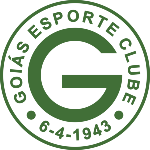
The history of Goiás Esporte Clube is not different from the history of other Brazilian clubs: it also started with a group of friends who liked to play football and decided to found a club. The first founding meeting started in the Barsi brothers' house, but was moved to the sidewalk of the house by the Barsi's mother, due to the noise that accompanied the meeting. This took place on April 6, 1943, marking the founding date.
With no money to invest in its own uniform

With no money to invest in its own uniform, Goiás played its first match, against Atlético Goianiense, with shirts donated by América Mineiro. There were only 9 pieces with horizontal green and white stripes and, therefore, it was necessary for 2 players to wear completely white shirts in the game, which took place at the Olympic Stadium. The team's coat of arms was embroidered by hand by the wife of one of the founders.
Grêmio Foot-Ball Porto Alegrense

Grêmio Foot-Ball Porto Alegrense was founded on September 15, 1903. The team was created by Cândido Dias da Silva and his friends from São Paulo. Days before the founding of the team, Silva, who always had his soccer ball under his arm, went to watch a soccer demonstration by the English and German players from the Rio Grande teams. The ball deflated during the presentation and Silva ran to borrow his. At the end of the match, he went to talk to the soccer players and found out more about football and how to found a team, giving rise to Grêmio a week later.
publicity
In the first Gre-Nal in history, on July 18, 1909

In the first Gre-Nal in history, on July 18, 1909, Grêmio beat Internacional by 10 x 0. On September 22, 1935, the centenary year of the Farroupilha Revolution, the team won the Metropolitan Championship. The 2-0 victory over Inter was so important that the board promised to celebrate it for the next 100 years. Since then, every year, a dinner has been held in honor of the conquest. It should be repeated by 2035.
Saci Pererê is Internacional's mascot

Saci Pererê is Internacional's mascot. The folkloric figure of the mischievous black boy who arrives in whirlwinds of wind is an allusion to the players' ability to deceive opponents with their dribbling and was adopted as a symbol of the team around the 40s, when the team was called Roller Compressor. The mascot gained even more popularity when, during his time at the club in 2006, Colombian striker Wason Rentería celebrated goals by imitating the Colorado mascot. When scoring, the player would jump on one leg, with a red cap and a pipe in his mouth.
The club

The club was named International inspired by the mission of welcoming representatives of different nationalities to the team. At the time, the hegemony of German descendants in Riograndense clubs was common. It was with this concern to include all the players that the team also earned the epithet of Clube do Povo. Red as the team's color says that Arquimedes Fortim, one of the founders, believed that it represented the "blood that flows equally in all".
publicity
The first Grenal took place in the founding year of Internac

The first Grenal took place in the founding year of Internacional. On the occasion, Grêmio scored 10-0 against Inter, until today considered the greatest defeat in the classic. This would actually be the second biggest goal difference in the dispute between the two biggest teams in Rio Grande do Sul if, in 1938, the referee Álvaro Silveira had not considered the score of 11 to 0, in favor of Internacional, with “ too many goals for a Grenal”. He decided to nullify 5 goals and Colorado ended up winning with just 6 goals difference.
Sport Club Internacional was founded on April 4, 1909

Sport Club Internacional was founded on April 4, 1909, by the brothers Henrique, José Eduardo and Luiz Poppe. Two Internacional stadiums hosted matches in the World Cups held in Brazil, in 1950 and in 2014. In the last century's World Cup, two games were hosted at Estádio dos Eucaliptos, which had been inaugurated in 1931. In the 2014 World Cup, the The stage was Beira-Rio, inaugurated in April 1969 and renovated for about two years to be able to host the FIFA games.
One of Inter's top scorers, Carlitos

One of Inter's top scorers, Carlitos, earned the nickname "dirt" because he was always up for mischief on the field. He once pinned Grêmio goalkeeper Júlio's shorts before a corner kick was taken. When he came out to defend the ball, the shorts ripped. The team that defended the shirt of Colorado in the 1940s became known as the “steamroller”. He had stars like right-wing Tesourinha. At the time, he won six consecutive Gaucho championships.
publicity
Internacional

Internacional was the first team from the south of Brazil to be Brazilian champion: it was in 1975. Colorado was also the first Brazilian to win the Copa Sudamericana: it was in 2008. Internacional still bears the mark of the last undefeated Brazilian champion of the history: there were 16 wins and 7 draws in the victorious journey of 1979. Internacional was the basis of the Brazilian team that won the gold medal in football at the 1952 Pan American Games. Eight starters plus the coach came from Colorado
In 1984

In 1984, Brazil competed in the football tournament of the Olympic Games in Los Angeles with the main team of Internacional and won the silver medal. Since the undefeated title of 1979, Internacional has never been Brazilian champion again. Colorado has beaten the bar several times: it was runner-up in 1988, 2005, 2006 and 2009. The biggest title in Internacional's history, the 2006 Club World Cup, was won thanks to an unlikely hero: substitute Adriano Gabirú left bench to score the title goal in the final against Barcelona.
Inter owns the two biggest goals in the history of the Campe

Inter owns the two biggest goals in the history of the Campeonato Gaúcho finals: 9 x 0 over Bagé, in 1944, and 8 x 1 over Juventude, in 2008. Imitate a Saci – that was the celebration used by the Colombian player Rentería during his time at Internacional. In addition to jumping on one foot, the attacker had the custom of putting a red cap on his head and a pipe in his mouth.
publicity
Internacional

Internacional is called “champion of everything” because it has titles in the Campeonato Gaúcho, Copa do Brasil, Campeonato Brasileiro, Libertadores, Club World Cup, Copa Sudamericana, Recopa Sul-Americana and Copa Suruga Bank. At the 2010 Club World Cup, however, Colorado made history in a negative way: for the first time a South American representative was eliminated before the final. Inter lost to Mazembe, from Congo, 2-0 in the semifinal.
Inter won what

Inter won what is considered one of the greatest classics in history. In 1988, in the semifinal of the Brazilian Championship, Inter lost to Grêmio by 1-0 with one player less, but managed to turn the game around in the second half to go for the decision. In addition, Colorado won the five knockout matches it played against Grêmio at national or international level: Campeonato Brasileiro in 1988, Copa do Brasil in 1992, Seletiva da Libertadores in 2000 and Copa Sudamericana in 2004 and 2008.
Palmeiras was founded on August 26

Palmeiras was founded on August 26, 1914 as Palestra Itália to be the team of the Italian colony, very strong in São Paulo at the beginning of the 20th century. The team was born from the desire of 3 young people to create a sports association that represented the Italian community that lived in São Paulo. They published an invitation in the newspaper to call other interested parties and, on August 26, 1914, they founded Palestra Itália, in a meeting in the center of the city.
publicity
Back
